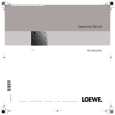|
|
|
Kategorie
|
|
Informacje
|
|
Polecamy
|
|
|
 |
|
|
Dla tego produktu nie napisano jeszcze recenzji!
SQE Test The PL1 component allows you to enable or disable the SQE Test. The SQE Test is used by 802.3 transceivers to confirm that the transceiver is functioning correctly. The function must be disabled for operation when installed in a Repeater. The function should be enabled for operation when connected to a LinkBuilder ECS Local Bridge Module 3C12050/1. The Transceiver Module is supplied with SQE Test disabled. See Figure 1 to locate the SQE Test jumper and then Figure 3 to ensure you have the correct selection.
Installing in a Stackable Hub or Repeater For FMS Stackables and Repeaters, hold the mounting panel with the pin header side of the board down. See Figure 1 to locate the pin header. For FMS II Stackables, hold the mounting panel with the pin header side of the board up. Insert the edge connector end of the Transceiver Module into the rear of the mother device. Slide the Transceiver Module in carefully to engage in the slot and push it fully home. Fix the mounting panel of the Transceiver Module to the back panel using the two screws from the blanking plate. Installing in an ECS or MSH Module Before you install the Transceiver Module, you must remove the mother device from the network and all power sources. Modules must be removed from the Chassis (you do not need to power down the chassis first). The 3C18146 Expansion Module must be separated from its mother module. See the relevant �How to Install and Use...� manual. Position the Module on a flat surface with the 16-way socket facing up. Hold the Transceiver Module by the mounting panel and board edge with the header pins facing down. See Figure 1 to locate the header pins. Pass the board of the Transceiver Module through the cut-out in the front panel. Align the socket on the Module with the pins on the Transceiver Module and push down firmly to connect. With the 3C18146 Expansion Module, you align the header and pins and press gently to engage the pins. Turn the pair over to rest on the Transceiver Module and press firmly close to the header to complete connection.
Fix the mounting panel of the Transceiver Module to the module using the two screws from the blanking plate. Connection Before proceeding with the installation of the module, check that the host equipment is set up to take the module. See the relevant �How to Install and Use...� manual. Re-install the mother device into its chassis and/or network. Connect the Transceiver Module to the TP segment. 4 Operation
Standards
The 3Com RJ45 Transceiver Module 3C12063 has been designed to comply with the following standards: Functional: Safety: E.M.C. PLS & AUI Specification ISO 8802.3 Sect. 7 & 10 UL 1950, EN 60950, CSA 22.2 #950 FCC Part 15 (Level A)
EN55022 (Level A) VFG 243 (Level B) IEC 801 (Parts 2-6) Environment IEC68 Operating Temperature: 0 to 500C 32 to 122 0F Humidity - 10 to 90% Non Cond.
Link LED The Link LED on the front of the Transceiver Module lights green when a link is detected. If a link is not present the LED does not light. 5 Problems
Radio Frequency Interference Statement This equipment has been tested with a class A computing device and has been found to comply with part 15 of FCC Rules. Operation in a residential area may cause unacceptable interference to radio and TV receptions requiring the operator to take whatever steps are necessary to correct the interference. This digital apparatus does not exceed the Class A limits for radio noise emissions from digital apparatus as set out in the interference-causing equipment standard entitled "Digital Apparatus", ICES-003 of the Department of Communications.
3
Installation
Only qualified personnel should install this device. Observe normal anti-static precautions! Use an earthed wrist-band! A 16-pin header and a 16-way edge connector are mounted on the Transceiver Module for connection to a Module, Stackable Hub or Repeater. A Twisted Pair cable can be connected to the RJ45 connector on the front of the Transceiver Module. Remove the blanking plate from the unit in which you are going to install the Transceiver Module. The relevant manual will tell you where to find the plate.
!
If the Link LED does not light when the Transceiver Module is installed the cause may be one of the following: Both ends of the link are configured as MDI - change one to MDIX. Both ends of the link are configured as MDIX - change one to MDI. The far end device is not powered up or may be faulty. Check the device. The cable linking the devices is broken or incorrectly wired. Change the cable. Disclaimer
Information in this document is subject to change without notice and does not represent a commitment on the part of 3Com. 3Com reserves the right to revise or change this document without obligation of 3Com to notify any person of the revisions or changes. Information contained in this document is believed to be accurate at the time of publication but no liability whatsoever can be accepted by 3Com arising out of any use of this information.
Cet appareil numérique respecte les limites de bruits radioélectriques applicables aux appareils numériques de Classe A prescrites dans la norme sur le matériel brouilleur : "Appareils Numériques", NMB-003 édictée par le ministre des Communications.
3Com and LinkBuilder are registered trademarks of the 3Com Corporation. Document No: DUA1206-3AAA01 Revision : 00 Issued: November 1994 © 1994 3Com Technologies Limited
Keep the blanking plate in a safe place so that it can be replaced if the Transceiver Module is removed.
Page 2
Page 3
|
|
 |
> |
|



